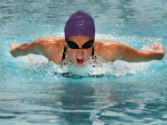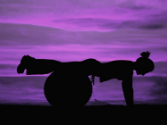 I’m very sore lately…everywhere. Why is this surprising? Because I’ve increased my stretching in a huge way over the last few months. But in that time I have also suffered from back pain that, although its finally waning, is still persistent, and new hip soreness. I’m not necessarily suggesting that the soreness and back pain are a result of more stretching…but I am wondering why I am not feeling much better and loose since beginning to stretch more! I have been looking into this and have found some interesting information that I want to share with you.
I’m very sore lately…everywhere. Why is this surprising? Because I’ve increased my stretching in a huge way over the last few months. But in that time I have also suffered from back pain that, although its finally waning, is still persistent, and new hip soreness. I’m not necessarily suggesting that the soreness and back pain are a result of more stretching…but I am wondering why I am not feeling much better and loose since beginning to stretch more! I have been looking into this and have found some interesting information that I want to share with you.
First, dynamic stretching before a workout is vital. Dynamic stretching involves gradual increases in your range of motion and speed of movement with a controlled swing (not bounce) that reach the limits of your range of motion in a controlled manner. We should never force this type of stretch. Examples of dynamic stretching are slow, controlled leg swings, arm swings, torso twists, leg lifts, butt kicks and jogging in place. No doubt I could be doing a lot more of this type of stretching…in fact I NEVER do it before I run!
Secondly, static stretching is not recommended before a workout because stretching cold muscles can lead to injury. Static stretching should be done after most workouts (after a cool down). When we stretch this way we should hold a given stretch only until we feel a slight pulling in the muscle (30 seconds is the usual amount many PT’s recommend), but no pain. As we hold the stretch, the muscle will relax, and as we feel less tension we can increase the stretch again until we feel the same slight pull. Some examples of static stretching are: side bends, hamstring stretch (sitting down with both legs in front and pulling arms toward toes or with one leg out and the other tucked, pulling arms in towards extended legs), calf stretches (leaning in toward wall with legs straightened). If you do not seem to gain any range of motion using the above technique, you may consider holding the stretch longer (up to 60 seconds).
This kind of stretching I HAVE been doing, although not immediately after my runs.
Thirdly, and most interesting to me, is that more flexibility does not necessarily equate to less injury, and an athlete with poor flexibility isn’t more likely to get injured. The key is to have the right flexibility for your sport (or kind of exercise you do), so you can easily move through the range of motion without straining muscles. Sometimes if we are doing the same kind of motion over time (such as running), our muscles can become tight. The hamstrings, hip flexors, quadriceps, and glutes are the main power generators. All of these movement patterns may result in muscle imbalances if a runner (or other kind of athlete) doesn’t stretch and strengthen accordingly. For more information on the kinds of stretches we (runners in particular, but any athlete) should be doing see the following advice from from Runners World.
According to physical therapist, Alan Tyson, for a stretch exercise to improve flexibility, it needs target the specific joint and provide enough stretch to the muscles and ligaments over time to allow an adaptation to a new, increased, range of motion. Basically, this means that when you stretch you need to feel the tightness and slight burning sensation that comes from going slightly beyond your normal range of motion. By doing so, we can develop a new range of motion over time. It is important to avoid over-stretching the muscles and causing an injury or muscle strain. The recommendation is to stretch to the point of mild discomfort but not to the point of pain. Another surprise to learn is that we can have tight ligaments and good muscle flexibility or loose ligaments and poor muscle flexibility (Krivickas and Feinberg 1996).
Some things we should be careful of are: stretching sore or even injured muscles strenuously, forcing the stretch beyond the point at which we can still tense the stretched muscles, and doing ballistic stretches (bobbing, bouncing, or jerky movements.). Consistent stretching programs such as yoga and pilates can help us to become more flexible in the long run and eventually avoid soreness. I am still not as consistent as I would like to be with a stretching program (although I am doing a lot more on my own and at Pure Barre classes). So for dealing with my recent soreness I guess I will have to be patient and see if things improve with more time, and I will ease off a little on the areas where the pain is persistent, i.e. my lower back, hips, and hamstrings. Time will tell…I will post about my progress (or lack thereof) soon.
How about you…have you recently started to add more flexibility work or stretching into your routine… Have you seen (or felt ) any results?





Speak Your Mind